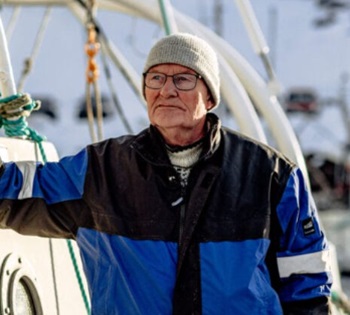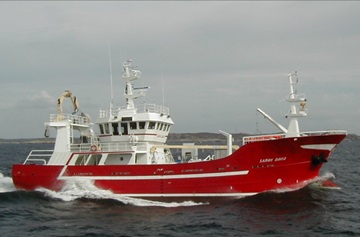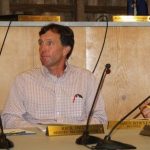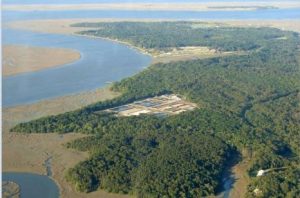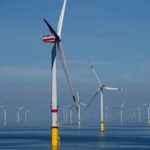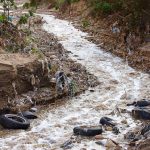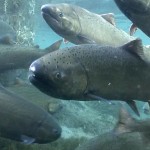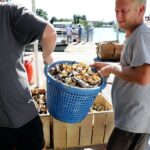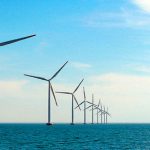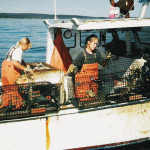Tag Archives: Norway
VESSEL REVIEW | Ecofive – New Norwegian shrimp and whitefish trawler boasts innovative catch handling setup
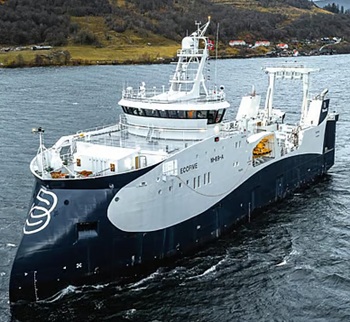 Norway’s Westcon Yards recently delivered a new factory trawler to local seafood company Bluewild. Designed by Norway’s Ulstein Design and Solutions, the DNV-classed Ecofive (an abbreviation of “Eco-Friendly Fishing Vessel”) was developed to ensure 100 per cent catch utilisation, minimised quality losses during handling, and reduced energy consumption. The concept focuses on utilising resources so that the main product, the by-products, and residual raw materials will be of very high quality. The newbuild has a steel hull, a length of 74 metres (240 feet), a beam of 16.8 metres (55.1 feet), a displacement of 2,200 tonnes, a speed of 14.5 knots, and accommodation for 30 personnel. The propulsion delivers bollard pulls of 85 tonnes at 2.5 knots and 75 tonnes at 4.5 knots. Photos, specifications. more, >>CLICK TO READ<< 12:15
Norway’s Westcon Yards recently delivered a new factory trawler to local seafood company Bluewild. Designed by Norway’s Ulstein Design and Solutions, the DNV-classed Ecofive (an abbreviation of “Eco-Friendly Fishing Vessel”) was developed to ensure 100 per cent catch utilisation, minimised quality losses during handling, and reduced energy consumption. The concept focuses on utilising resources so that the main product, the by-products, and residual raw materials will be of very high quality. The newbuild has a steel hull, a length of 74 metres (240 feet), a beam of 16.8 metres (55.1 feet), a displacement of 2,200 tonnes, a speed of 14.5 knots, and accommodation for 30 personnel. The propulsion delivers bollard pulls of 85 tonnes at 2.5 knots and 75 tonnes at 4.5 knots. Photos, specifications. more, >>CLICK TO READ<< 12:15
Starmer’s six key goals in Brexit ‘reset’ – and what the EU could demand in return
 Sir Keir Starmer became the first British leader since Brexit to attend an EU summit in Brussels on Monday night, where he pressed the case for a “reset” in relations over a dinner of celeriac soup and fish. While the Prime Minister focused on what has been described as the “low hanging fruit” of greater defence co-operation, the UK has a series of key demands that it wants to extract from the EU. However, the European bloc will be seeking concessions too. So what is it that the UK wants from the EU, and what does the bloc want in return? more, >>CLICK TO READ<< 12:31
Sir Keir Starmer became the first British leader since Brexit to attend an EU summit in Brussels on Monday night, where he pressed the case for a “reset” in relations over a dinner of celeriac soup and fish. While the Prime Minister focused on what has been described as the “low hanging fruit” of greater defence co-operation, the UK has a series of key demands that it wants to extract from the EU. However, the European bloc will be seeking concessions too. So what is it that the UK wants from the EU, and what does the bloc want in return? more, >>CLICK TO READ<< 12:31
UK REACHES DEAL FOR CONTINUED ACCESS TO FISH IN NORWEGIAN WATERS
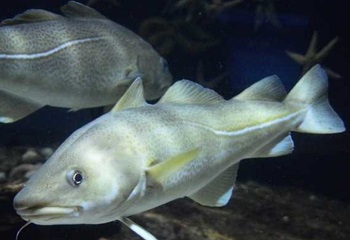 The UK has struck a deal with Norway ensuring continued access to Norwegian North Sea waters for 2025 The agreement will also secure UK quota for Arctic cod, worth over £3 million based on historic landing prices. This follows the conclusion of the UK’s wider fishing negotiations in recent weeks, which secured 720,000 tonnes of fishing opportunities for the UK fleet in 2025. The UK fishing industry will benefit from continued access to Norwegian waters to catch up to 30,000 tonnes of their whitefish quota in stocks such as cod, haddock and hake, the UK Government has been announced. more, >>CLICK TO READ<< 08:52
The UK has struck a deal with Norway ensuring continued access to Norwegian North Sea waters for 2025 The agreement will also secure UK quota for Arctic cod, worth over £3 million based on historic landing prices. This follows the conclusion of the UK’s wider fishing negotiations in recent weeks, which secured 720,000 tonnes of fishing opportunities for the UK fleet in 2025. The UK fishing industry will benefit from continued access to Norwegian waters to catch up to 30,000 tonnes of their whitefish quota in stocks such as cod, haddock and hake, the UK Government has been announced. more, >>CLICK TO READ<< 08:52
Crab pot retrieval concept crashes
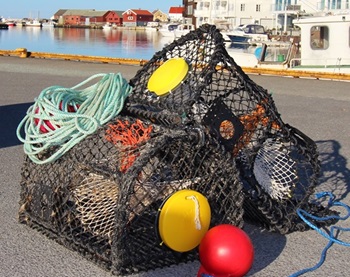 Norwegian company Resqunit, with Deadliest Catch star Sig Hansen as global brand ambassador for its ingenious trap retrieval concept, has crashed into bankruptcy with debts of NoK13.5 million – equivalent to over a million euros. The bankruptcy was announced in August, in contrast to the initial fanfare of publicity and optimism as the company’s owners expected the world to embrace its product. A holding company was registered in Sweden in 2021. Soon afterwards the holding company was listed on the US Nasdaq First North Growth Market. Things happened fast for Resqunit and the next step was company was set up in Canada as the concept seemed to be something that couldn’t go wrong as governments, researchers and environmental organisations had ghost fishing high up on the agenda. Photos, more, >>CLICK TO READ<< 12:15
Norwegian company Resqunit, with Deadliest Catch star Sig Hansen as global brand ambassador for its ingenious trap retrieval concept, has crashed into bankruptcy with debts of NoK13.5 million – equivalent to over a million euros. The bankruptcy was announced in August, in contrast to the initial fanfare of publicity and optimism as the company’s owners expected the world to embrace its product. A holding company was registered in Sweden in 2021. Soon afterwards the holding company was listed on the US Nasdaq First North Growth Market. Things happened fast for Resqunit and the next step was company was set up in Canada as the concept seemed to be something that couldn’t go wrong as governments, researchers and environmental organisations had ghost fishing high up on the agenda. Photos, more, >>CLICK TO READ<< 12:15
Vessel Review: F/V Ingeborg Arntsen – Norwegian fishing family acquires hybrid longliner/netter
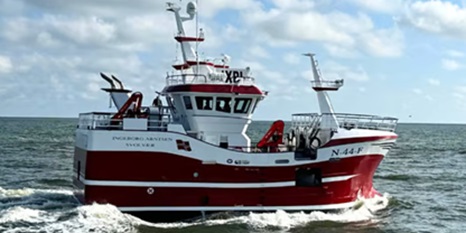 Danish shipbuilder Vestværftet recently handed over a new longliner/gillnetter to Nordsten, a company owned by brothers Jack-Allan and Hans-Michael Arntsen of Lofoten in northern Norway. Named F/V Ingeborg Arntsen after their mother, the newbuild replaces the brothers’ current boat F/V Tommy Junior, which was built in 1991 and had been in operation with Nordsten since 2007 until recently being sold to a sister company also owned by the family. The Arntsens decided to purchase a new boat upon realising the earlier Tommy Junior had reached its limits in terms of providing safe living and working conditions for crews. With a new boat offering improvements in such conditions, the brothers believed it would be possible to land catches of even higher quality. Photos, specifications, information, more, >>CLICK TO READ<< 08:45
Danish shipbuilder Vestværftet recently handed over a new longliner/gillnetter to Nordsten, a company owned by brothers Jack-Allan and Hans-Michael Arntsen of Lofoten in northern Norway. Named F/V Ingeborg Arntsen after their mother, the newbuild replaces the brothers’ current boat F/V Tommy Junior, which was built in 1991 and had been in operation with Nordsten since 2007 until recently being sold to a sister company also owned by the family. The Arntsens decided to purchase a new boat upon realising the earlier Tommy Junior had reached its limits in terms of providing safe living and working conditions for crews. With a new boat offering improvements in such conditions, the brothers believed it would be possible to land catches of even higher quality. Photos, specifications, information, more, >>CLICK TO READ<< 08:45
Norway, EU and UK conclude 2025 fisheries deal
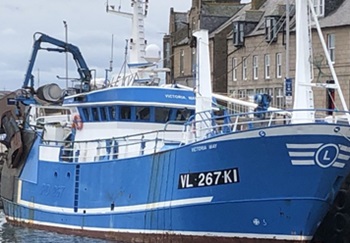 A tripartite agreement on quotas and management of joint North Sea stocks has been reached between Norway, the EU and the UK. ‘I am satisfied that we have a fisheries agreement with the EU and Britain. The agreement we have now entered into means that we agree on quotas for stocks we manage together in the North Sea and is important for all three parties. The agreement contributes to sustainable management,’ says Norway’s Minister of Fisheries and Oceans Marianne Sivertsen Næss. The parties also agree to continue closing the spawning grounds for cod in 2025. The closures will take place in the first quarter. more, >>CLICK TO READ<< 12:07
A tripartite agreement on quotas and management of joint North Sea stocks has been reached between Norway, the EU and the UK. ‘I am satisfied that we have a fisheries agreement with the EU and Britain. The agreement we have now entered into means that we agree on quotas for stocks we manage together in the North Sea and is important for all three parties. The agreement contributes to sustainable management,’ says Norway’s Minister of Fisheries and Oceans Marianne Sivertsen Næss. The parties also agree to continue closing the spawning grounds for cod in 2025. The closures will take place in the first quarter. more, >>CLICK TO READ<< 12:07
Norwegian fishermen snagged U.S. nuclear-powered submarine
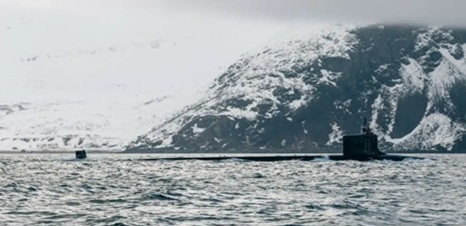 “We had just emptied the nets and put them out again and was on our way back to shore at Sommarøya when we were called by the Coast Guard on channel 16 on the VHF-radio,” says Harald Engen (22) to NRK Troms. Engen is captain on Øygutt, the 10 meters small fishing vessel. The Coast Guard could inform that a submarine had sailed into the net and dragged it two nautical miles north where it was cut off. The incident occurred outside Malangen, west of Tromsø on the coast to the Norwegian Sea. The submarine was the USS Virginia, a nuclear-powered 115 meters long attack sub. Such submarines are in recent years more frequently surfacing in the sheltered fjords outside Tromsø. Norway’s Coast Guard are assisting in bringing onboard supplies or new crew members. more, >>CLICK TO READ<< 13:12
“We had just emptied the nets and put them out again and was on our way back to shore at Sommarøya when we were called by the Coast Guard on channel 16 on the VHF-radio,” says Harald Engen (22) to NRK Troms. Engen is captain on Øygutt, the 10 meters small fishing vessel. The Coast Guard could inform that a submarine had sailed into the net and dragged it two nautical miles north where it was cut off. The incident occurred outside Malangen, west of Tromsø on the coast to the Norwegian Sea. The submarine was the USS Virginia, a nuclear-powered 115 meters long attack sub. Such submarines are in recent years more frequently surfacing in the sheltered fjords outside Tromsø. Norway’s Coast Guard are assisting in bringing onboard supplies or new crew members. more, >>CLICK TO READ<< 13:12
Russian ‘spy whale’ Hvaldimir found dead near Norway
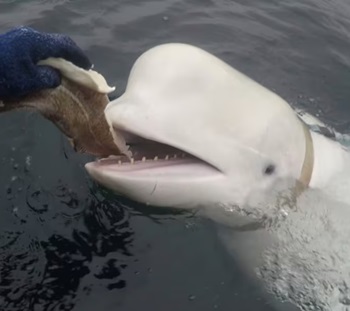 A beluga whale that was suspected of spying for Russia after being discovered in Norwegian waters five years ago has been found dead, according to the non-profit organization that had been monitoring the whale. The body of Hvaldimir — a combination of the Norwegian word for whale and the first name of Russian President Vladimir Putin — was spotted floating in the sea by a father and son fishing in southern Norway over the weekend, Norwegian public broadcaster NRK reported. Hvaldimir was wearing a harness with what appeared to be a mount for a small camera when he was first found in 2019 near the island of Ingoya in Norway’s north, around 300 kilometres from the Russian maritime border. The harness was stamped with “Equipment St Petersburg” in English. more, >>CLICK TO READ<< 07:08
A beluga whale that was suspected of spying for Russia after being discovered in Norwegian waters five years ago has been found dead, according to the non-profit organization that had been monitoring the whale. The body of Hvaldimir — a combination of the Norwegian word for whale and the first name of Russian President Vladimir Putin — was spotted floating in the sea by a father and son fishing in southern Norway over the weekend, Norwegian public broadcaster NRK reported. Hvaldimir was wearing a harness with what appeared to be a mount for a small camera when he was first found in 2019 near the island of Ingoya in Norway’s north, around 300 kilometres from the Russian maritime border. The harness was stamped with “Equipment St Petersburg” in English. more, >>CLICK TO READ<< 07:08
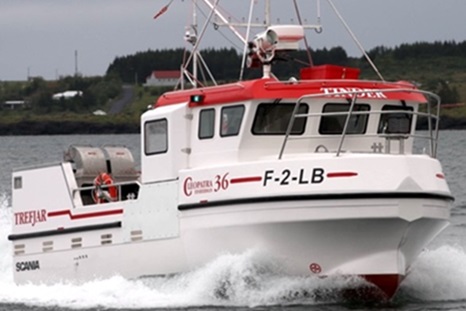
Norwegian fisherman’s new Cleopatra 36
Kjøllefjord skipper owner Daniel Lauritzen has taken delivery of a new Cleopatra 36 from Icelandic boatbuilder Trefjar. F/V Tinder is a standard Cleopatra 36 measuring 10.99 metres and with a 3.80-metre beam, and is rigged for longlining and gillnetting, and also ready for fishing king crab part of the year. The main engine is a 350hp Scania D9 driving a ZF286IV transmission, and a 9kW Nanni 9kW generator fitted in the engine room provides auxiliary power. more, >>CLICK TO READ<< 12:20

New Gillnetter/longliner for Lofoten family
New netter/longliner F/V Ingeborg Arntsen, built by Vestværft for Lofoten brothers Jack-Allan and Hans-Michael Arntsen, represents a serious step up over their older vessel in terms of both operational efficiency and the living and working conditions on board. Ingeborg Arntsen has a 735kW MAN D2862LE447 main engine, and auxiliary engines are also from MAN. All engines are equipped with SCR systems meeting IMO Tier III requirements. The propeller and gear are from Finnøy, and there are two electric thrusters from Hundested A/S. more, >>CLICK TO READ<< 10:47
F/V Argos Georgia Tragedy: Falklands looking after community’s emotional wellbeing following traumatic event
 Following the incident involving the Argos Georgia this week, the Falkland Islands government Emotional Wellbeing Service (EWS) would like to reach out to members of the community who may be feeling distressed about what has happened. We have spoken to a number of people from across our community who are feeling very high levels of distress due to the incident. We would like to reassure anyone who is feeling this way that this is a very natural reaction to such a disaster, especially in such a small, close-knit community. If you have been directly or indirectly affected by this incident, please know that you are not alone. more, >>CLICK TO READ<< 14:53
Following the incident involving the Argos Georgia this week, the Falkland Islands government Emotional Wellbeing Service (EWS) would like to reach out to members of the community who may be feeling distressed about what has happened. We have spoken to a number of people from across our community who are feeling very high levels of distress due to the incident. We would like to reassure anyone who is feeling this way that this is a very natural reaction to such a disaster, especially in such a small, close-knit community. If you have been directly or indirectly affected by this incident, please know that you are not alone. more, >>CLICK TO READ<< 14:53
Tragedy strikes fishing operation
 Nine crew members had been confirmed dead and four were still missing as of Wednesday, according to reports in both Norwegian and British media. News bureau Reuters reported that four persons remained missing while 14 were found alive, 13 of them on board one of the Fishing Vessel Argos Georgia‘s lifeboats and one on another. Argos Froyanes is described on its own website as a privately owned British-Norwegian partnership between Argos, based in the Falkland Islands, and Ervik Havfiske, based at Stadlandet in Western Norway. Eleven Ervik Havfiske vessels have been operating from the Barents Sea off Norway to as far south as Antarctica, areas known for rough weather and sea conditions but also for being home to high-quality fish in deep waters. more, >>CLICK TO READ<< 12:59
Nine crew members had been confirmed dead and four were still missing as of Wednesday, according to reports in both Norwegian and British media. News bureau Reuters reported that four persons remained missing while 14 were found alive, 13 of them on board one of the Fishing Vessel Argos Georgia‘s lifeboats and one on another. Argos Froyanes is described on its own website as a privately owned British-Norwegian partnership between Argos, based in the Falkland Islands, and Ervik Havfiske, based at Stadlandet in Western Norway. Eleven Ervik Havfiske vessels have been operating from the Barents Sea off Norway to as far south as Antarctica, areas known for rough weather and sea conditions but also for being home to high-quality fish in deep waters. more, >>CLICK TO READ<< 12:59
Norway: Protection zone’s unexpected consequences hit local fishermen
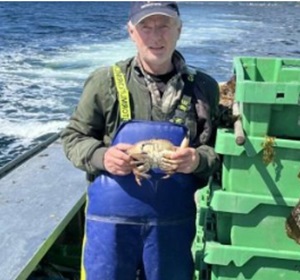 Norway’s Directorate of Fisheries is being urged to issue a dispensation allowing commercial fishermen to fish for wrasse and crab inside a newly created conservation area for lobster near Stavanger. The Norwegian Fishermen’s Association (Norges Fiscella) believes that such a dispensation can be made without any negative effects on conservation. These measures were introduced to protect over-exploited lobster stocks, but this has had unforeseen consequences for local fishermen, as Norges Fiskarkag and local association Sør-Norges-Fiskarlag have taken the initiative in drawing attention to this issue. more, >>CLICK TO READ<< 11:54
Norway’s Directorate of Fisheries is being urged to issue a dispensation allowing commercial fishermen to fish for wrasse and crab inside a newly created conservation area for lobster near Stavanger. The Norwegian Fishermen’s Association (Norges Fiscella) believes that such a dispensation can be made without any negative effects on conservation. These measures were introduced to protect over-exploited lobster stocks, but this has had unforeseen consequences for local fishermen, as Norges Fiskarkag and local association Sør-Norges-Fiskarlag have taken the initiative in drawing attention to this issue. more, >>CLICK TO READ<< 11:54
F/V Frøyanes: Ice-Capable Trawler/Crabber for Norwegian Barents Sea Fishing Company
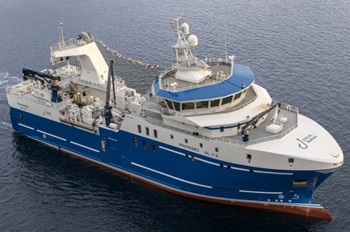 Norwegian fishing company Ervik Havfiske recently took delivery of a new shrimp trawler built to a design by naval architecture firm Marin Teknikk. The steel-hulled F/V Frøyanes is outfitted as a triple-rig trawler that can also be utilised for catching snow crab in the Norwegian and Barents Seas. “Ervik Havfiske wanted a combination of shrimp trawling and crab catching capability,” Thomas Edvard Gjerde, Sales Manager Fish and Aqua at Marin Teknikk, told Baird Maritime. “The owner also wanted a vessel with a moonpool, which is a common feature on the longliners in its fleet.” The array of fishing equipment on Frøyanes includes conventional trawls and a large moonpool through which crab pots can be hauled on board. Moonpools that have proven effective in longliners are also confirmed to be useful in working with crabs, particularly in ensuring their gentle handling and protection from the elements for better catch quality. This also allows female crabs to be easily sorted out and released back into the sea so they can reproduce. Photos, more, >>CLICK TO READ<< 10:24
Norwegian fishing company Ervik Havfiske recently took delivery of a new shrimp trawler built to a design by naval architecture firm Marin Teknikk. The steel-hulled F/V Frøyanes is outfitted as a triple-rig trawler that can also be utilised for catching snow crab in the Norwegian and Barents Seas. “Ervik Havfiske wanted a combination of shrimp trawling and crab catching capability,” Thomas Edvard Gjerde, Sales Manager Fish and Aqua at Marin Teknikk, told Baird Maritime. “The owner also wanted a vessel with a moonpool, which is a common feature on the longliners in its fleet.” The array of fishing equipment on Frøyanes includes conventional trawls and a large moonpool through which crab pots can be hauled on board. Moonpools that have proven effective in longliners are also confirmed to be useful in working with crabs, particularly in ensuring their gentle handling and protection from the elements for better catch quality. This also allows female crabs to be easily sorted out and released back into the sea so they can reproduce. Photos, more, >>CLICK TO READ<< 10:24
Pushing Technology Boundaries
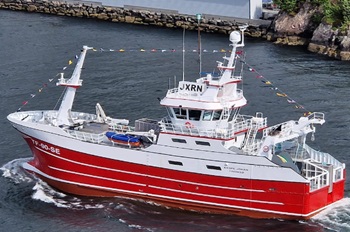 Fishing vessel Aksel Johan has it all – battery hybrid propulsion, heat recovery, peak shaving, and load balancing on the engine, hull and propeller, along with exhaust gas cleaning – plus it’s the first fishing vessel to use a thermoelectric system to harness heat from the exhaust in a world first. Built for Senjahopen company Berg Fisk AS, Aksel Johan is some months behind schedule and should have been delivered in October last year – but delays at the Baltic yard where the hull was fabricated, due to the war in Ukraine resulting in a shortage of manpower, meant that the construction has been challenging. But according to Berg Fisk’s managing director Johan-Arild Hansen, the new vessel has performed perfectly on the delivery trip from the yard in Denmark. Photos, more, >>CLICK TO READ<< 10:56
Fishing vessel Aksel Johan has it all – battery hybrid propulsion, heat recovery, peak shaving, and load balancing on the engine, hull and propeller, along with exhaust gas cleaning – plus it’s the first fishing vessel to use a thermoelectric system to harness heat from the exhaust in a world first. Built for Senjahopen company Berg Fisk AS, Aksel Johan is some months behind schedule and should have been delivered in October last year – but delays at the Baltic yard where the hull was fabricated, due to the war in Ukraine resulting in a shortage of manpower, meant that the construction has been challenging. But according to Berg Fisk’s managing director Johan-Arild Hansen, the new vessel has performed perfectly on the delivery trip from the yard in Denmark. Photos, more, >>CLICK TO READ<< 10:56
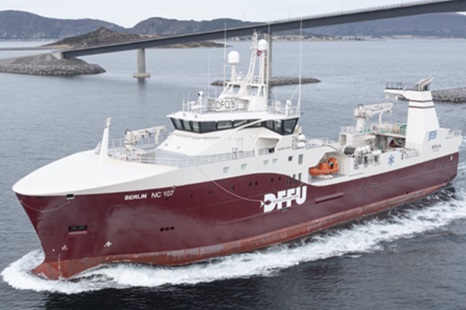
High-Tech Trawler offers New Opportunities
‘It looks good,’ said Sigurður Óli Kristjánsson, skipper of new factory trawler Berlin as he was preparing to head back to Norway for a shakedown trip to fine-tune the sophisticated processing deck. Berlin is the latest Vard design trawlers over the last few years, delivered to Nergård, Luntos and other fishing companies, and is practically identical to Akraberg, which was built for Faroese company Framherji in 2022. ‘It’s a very fine trawler, very high-tech. I like the look of the winches. These are very sophisticated and precise, with Scantrol management systems, and with energy-saving functionality. These trawlers have more power, with a nine-cylinder engine, and everything is a size up from the old Berlin. The thinking is that it’s more economic to have a more powerful engine that can run at a more econonic speed instead of being at full revs,’ he said and added that this is a departure from running the main engine at a set speed and then adjusting the propeller pitch as required. Photos, video, more, >>click to read<< 11:14
Less Effort and Better Catches with New-Concept Crab Gear
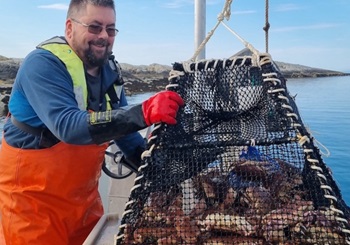 It was a shoulder injury that prompted Norwegian crab fisherman Jim Harald Sæternes to take a hard look at the way things have always been done, and to come up with a set of new ideas – which have been highly successful. So that he could continue to fish without adding to the strain on his shoulder, he developed the design of a larger and more effective crab pot, as well as a handling system for his boat that took out the repetitive heavy lifting – the root cause of his health problems. But the catch rates that his Vikingteina (the name means Viking Traps) pots have shown is the clincher. Photos, more, >>click to read<< 17:21
It was a shoulder injury that prompted Norwegian crab fisherman Jim Harald Sæternes to take a hard look at the way things have always been done, and to come up with a set of new ideas – which have been highly successful. So that he could continue to fish without adding to the strain on his shoulder, he developed the design of a larger and more effective crab pot, as well as a handling system for his boat that took out the repetitive heavy lifting – the root cause of his health problems. But the catch rates that his Vikingteina (the name means Viking Traps) pots have shown is the clincher. Photos, more, >>click to read<< 17:21
Vessel Review: Sorkapp – New Norwegian Stern Trawler Boasts Low Environmental Impact
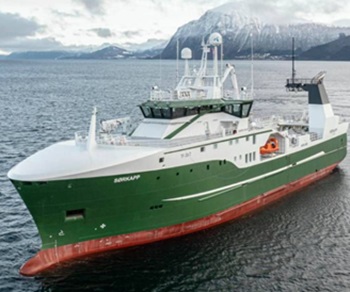 Norwegian fishing company Nergard Havfiske has expanded its vessel fleet following the recent acquisition of a hybrid-powered stern trawler designed and built by compatriot company Vard. The final trawler in a series of three built by Vard for the same owner, Sørkapp (“South Cape”) utilises a design that has been continuously developed to meet the latest demands for fish health management, efficiency, and environmentally friendly operations. Construction of the hull took place at Vard Braila in Romania while completion was carried out at Vard Brattvaag in Norway. The vessel was also built to incorporate efficient technology to bring catch ashore with a minimal environmental footprint, which will then lead to improvements in both catch quality and crew safety as well as more sustainable operations. Photos, more, >>click to read<< 09:52
Norwegian fishing company Nergard Havfiske has expanded its vessel fleet following the recent acquisition of a hybrid-powered stern trawler designed and built by compatriot company Vard. The final trawler in a series of three built by Vard for the same owner, Sørkapp (“South Cape”) utilises a design that has been continuously developed to meet the latest demands for fish health management, efficiency, and environmentally friendly operations. Construction of the hull took place at Vard Braila in Romania while completion was carried out at Vard Brattvaag in Norway. The vessel was also built to incorporate efficient technology to bring catch ashore with a minimal environmental footprint, which will then lead to improvements in both catch quality and crew safety as well as more sustainable operations. Photos, more, >>click to read<< 09:52
Fish farming fouls fjords, faces fines
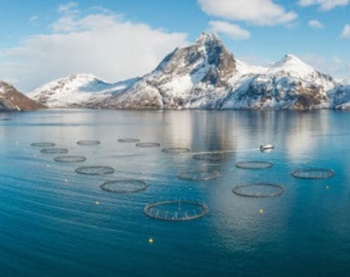 Norway’s huge fish-farming industry has become almost as controversial as the country’s oil and gas. Salmon producers in particular have long been accused of endangering wild salmon, but now Norwegian media have also reported how some fish hatcheries have polluted fjords while fish farms have neglected fish welfare. This week six of Norway’s major salmon producers also found themselves facing charges of collusion lodged by the European Commission. Norway is home to the world’s largest salmon producers and the EU is their biggest market. On Thursday, EU competition authorities sent out a “Statement of Objections” to six Norwegian salmon producers including Lerøy, Mowi, SalMar, Cermaq, Grieg Seafood and Bremnes. All are suspected of having “breached EU antitrust rules by colluding to distort competition in the market for spot sales of Norwegian farmed Atlantic salmon in the EU.” photos, more, >>click to read<< 12:26
Norway’s huge fish-farming industry has become almost as controversial as the country’s oil and gas. Salmon producers in particular have long been accused of endangering wild salmon, but now Norwegian media have also reported how some fish hatcheries have polluted fjords while fish farms have neglected fish welfare. This week six of Norway’s major salmon producers also found themselves facing charges of collusion lodged by the European Commission. Norway is home to the world’s largest salmon producers and the EU is their biggest market. On Thursday, EU competition authorities sent out a “Statement of Objections” to six Norwegian salmon producers including Lerøy, Mowi, SalMar, Cermaq, Grieg Seafood and Bremnes. All are suspected of having “breached EU antitrust rules by colluding to distort competition in the market for spot sales of Norwegian farmed Atlantic salmon in the EU.” photos, more, >>click to read<< 12:26
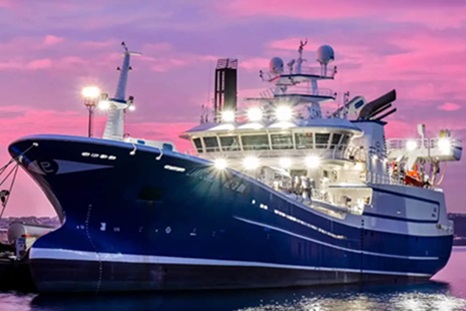
Liafjord Heads For Home
Norwegian fishing company Liegruppen’s new pelagic trawler Liafjord is steaming home to Norway, having been handed over to its owners by the Cemre Shipyard in Turkey. The 71-metre by 15-metre beam Liafjord is designed by Salt Ship Design and follows the groundbreaking LNG-powered Libas, which was delivered by the same yard several years ago. Liegruppen opted not to go for the same LNG propulsion system for Liafjord, although the vessel has some respectable green energy credentials, with electric winches, heat recovery technology and a large battery pack as part of its hybrid propulsion. Photo, more, >>click to read<< 12:21
UK secures £970million fishing stock with EU in deal ‘better than if we were in the bloc’
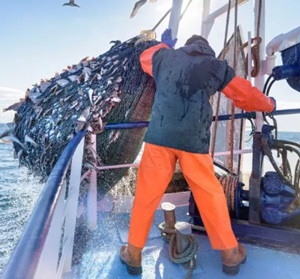 A new set of agreements between Norway and the UK opens up an estimated €1billion in fishing opportunities for the EU country, the European Commission has said. The UK meanwhile has secured an estimated £970million in the deal. It comes after years of haggling over post-Brexit fishing arrangements which have left hundreds of UK fishermen “betrayed” – but the Government says the new deal for 2024 provides more for UK fishermen than it would have done were we still in the bloc. Fisheries Minister Mark Spencer said: “These significant deals give UK fishermen access to important fish stocks worth £970million and take advantage of our position outside the EU to independently negotiate in our fishing fleets best interest. more, >>click to read<< 08:32
A new set of agreements between Norway and the UK opens up an estimated €1billion in fishing opportunities for the EU country, the European Commission has said. The UK meanwhile has secured an estimated £970million in the deal. It comes after years of haggling over post-Brexit fishing arrangements which have left hundreds of UK fishermen “betrayed” – but the Government says the new deal for 2024 provides more for UK fishermen than it would have done were we still in the bloc. Fisheries Minister Mark Spencer said: “These significant deals give UK fishermen access to important fish stocks worth £970million and take advantage of our position outside the EU to independently negotiate in our fishing fleets best interest. more, >>click to read<< 08:32
Fishing deals said to have netted £393 million for Scots’ fleet
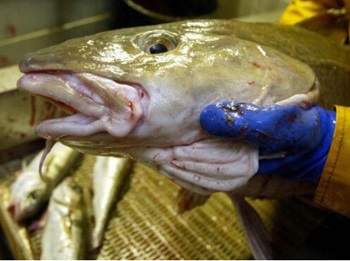 A trilateral agreement between the UK, European Union and Norway covers the total allowable catch (TAC) limits and management measures for jointly managed stocks in the Nort Sea. It has delivered quota increases for all six stocks – cod, haddock, whiting, plaice, saithe and herring. These are said to be worth an estimated £199m for Scots’ fishers, an increase of £68m compared to 2023 quotas. The government said this deal reflected positive advice from the International Council for the Exploration of the Sea, an influential group of marine scientists. It has delivered quota increases for all six stocks – cod, haddock, whiting, plaice, saithe and herring. Photos, more, >>click to read<< 14::56
A trilateral agreement between the UK, European Union and Norway covers the total allowable catch (TAC) limits and management measures for jointly managed stocks in the Nort Sea. It has delivered quota increases for all six stocks – cod, haddock, whiting, plaice, saithe and herring. These are said to be worth an estimated £199m for Scots’ fishers, an increase of £68m compared to 2023 quotas. The government said this deal reflected positive advice from the International Council for the Exploration of the Sea, an influential group of marine scientists. It has delivered quota increases for all six stocks – cod, haddock, whiting, plaice, saithe and herring. Photos, more, >>click to read<< 14::56
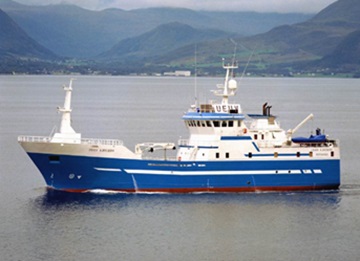
Fishing Vessel Nord-Fugloy: Seiner designed for northern Norwegian waters
Norwegian shipbuilder Larsnes Mek Verksted recently delivered a new seiner to compatriot fishing company Camaro Fiskeriselskap. Named after a local island, Nord-Fugløy was built to a DNV-compliant design developed by local naval architecture firm Skipskompetanse for seine netting and purse seining. Kent-Arild Apneseth, project manager at Skipskompetanse, said the brief from the owner was to optimise a vessel for the coastal fishery and implement a new way of operating Danish seine, hauling the net from the stern in a manner that will increase efficiency and to be able to operate more securely in a larger weather window. Photos, >>click to read<<08:21
Norway: Cut to king crab quota recommended
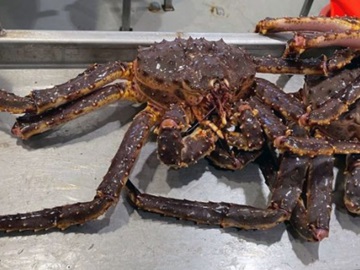 Based on the outcome of this year’s king crab survey, scientists at Norway’s Institute of Marine Research (HI) are recommending a hefty cut in the 2024 king crab quota to not more than 966 tonnes, as the survey results indicate a significant decline in the population. This means a substantial reduction compared to the quota advice for 2023, which was 2375 tonnes. ‘The result from this year’s survey shows a significant decrease in the number of crabs above the minimum target size for fisheries. The fact that we are now seeing a decline in the stock is, of course, bad news for the fishermen,’ said HI population manager for king crab, Carsten Hvingel. >>click to read<< 09:31
Based on the outcome of this year’s king crab survey, scientists at Norway’s Institute of Marine Research (HI) are recommending a hefty cut in the 2024 king crab quota to not more than 966 tonnes, as the survey results indicate a significant decline in the population. This means a substantial reduction compared to the quota advice for 2023, which was 2375 tonnes. ‘The result from this year’s survey shows a significant decrease in the number of crabs above the minimum target size for fisheries. The fact that we are now seeing a decline in the stock is, of course, bad news for the fishermen,’ said HI population manager for king crab, Carsten Hvingel. >>click to read<< 09:31
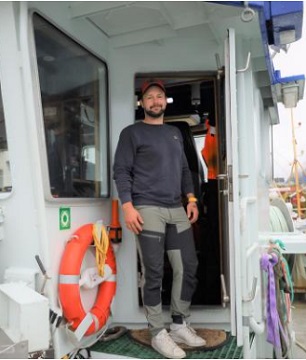
Life on the Arctic Coast: Coxswain Kim Roger Stays Calm When Put to the Test
It is afternoon in the idyllic fishing village Sørvågen in the Lofoten Islands. Below the houses, in the bay, several small fishing vessels and a fish processing plant can be found. It is quiet outside, with the exception of a few seagulls crying. A larger fishing vessel also lies along the quay, the purse seine boat Kim Roger. High North News is allowed onboard and greet the coxswain and fisherman Kim Roger Benonisen (38). The eye is drawn to the amount of equipment located on the stern and the bow of the 50-foot-long boat; various types of ropes, winches, hydraulic hoses, a crane, and a net hauler. Kim Roger says he has been fishing his entire life. His first winter season was in 2003 – exactly 20 years ago. Photos, >>click to read<< 10:36
SILLE MARIE – Karstensens Shipyard delivers new trawler to Norway
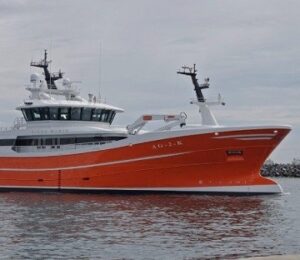 On July 2, 2021, a contract was entered into between Sille Marie AS and Karstensens Shipyard A/S for the construction of a new 65.90 m trawler. The newbuilding is now completed and delivered to the shipping company. A christening ceremony will be held on Saturday, August 12, 2023, in Kristiansand. Sille Marie AS is owned by Carl Aamodt and the Salthaug family from Søgne, Norway. The shipping company was established in 2015. This vessel is the company’s first newbuilding and will replace the previous “Sille Marie,” which was purchased from Sweden in 2015 and has now been sold back to Sweden. The company is led by Carl Aamodt in collaboration with skipper Bastian Salthaug, Yngvar Salthaug, and chief engineer Tobias Salthaug. Lots of photos, >click to read< 09:56
On July 2, 2021, a contract was entered into between Sille Marie AS and Karstensens Shipyard A/S for the construction of a new 65.90 m trawler. The newbuilding is now completed and delivered to the shipping company. A christening ceremony will be held on Saturday, August 12, 2023, in Kristiansand. Sille Marie AS is owned by Carl Aamodt and the Salthaug family from Søgne, Norway. The shipping company was established in 2015. This vessel is the company’s first newbuilding and will replace the previous “Sille Marie,” which was purchased from Sweden in 2015 and has now been sold back to Sweden. The company is led by Carl Aamodt in collaboration with skipper Bastian Salthaug, Yngvar Salthaug, and chief engineer Tobias Salthaug. Lots of photos, >click to read< 09:56
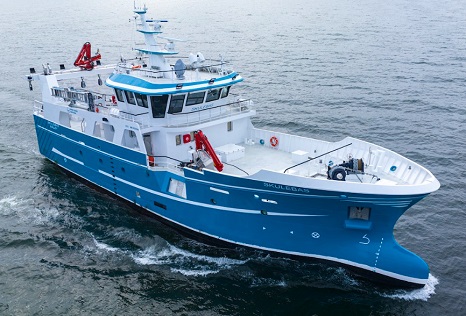
The Worlds Most Advanced Fishery Training Vessel
A Norwegian high school has taken delivery of a 10-million-euro training vessel for those looking to become fishers. The most advanced of its kind Skulebas is designed and built by Hvide Sande Shipyard in Denmark, and is rigged for trawling, seining, gillnetting and longlining. It’s not just the capacity to switch between these fishing methods that puts Skulebas in a class of its own, but also the hybrid propulsion combining battery and diesel-electric propulsion. Skulebas is about to set off for Norway, where it will serve as a training vessel for the Måløy High School (years 10 – 12, after primary education), for young people planning to work as fishermen, navigators, engineers, and cooks. Video, photos, >click to read< 16:27






 The new FS80 trawl sonar released by Simrad is ‘tailored to deliver,’ according to the company, as it integrates a number of functions into a single unit. ‘This is the first time a truly integrated system has hit the market, with a wide range of functionality and advanced multifrequency performance, delivering an operational flexibility, and reliable results, that all customers can take advantage of whatever the pelagic fish types, whatever the size of the trawl,’ said Mads Dahl, VPP sales at Simrad’s parent company Kongsberg Discovery. This compact, modular and multifrequency offering is the market’s first sonar system to combine net monitoring, intake profiling and bottom detection in a single unit, making the very latest sonar technology accessible.
The new FS80 trawl sonar released by Simrad is ‘tailored to deliver,’ according to the company, as it integrates a number of functions into a single unit. ‘This is the first time a truly integrated system has hit the market, with a wide range of functionality and advanced multifrequency performance, delivering an operational flexibility, and reliable results, that all customers can take advantage of whatever the pelagic fish types, whatever the size of the trawl,’ said Mads Dahl, VPP sales at Simrad’s parent company Kongsberg Discovery. This compact, modular and multifrequency offering is the market’s first sonar system to combine net monitoring, intake profiling and bottom detection in a single unit, making the very latest sonar technology accessible. 